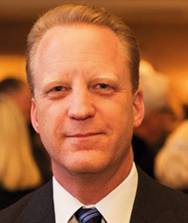The 2021 Summit of the Americas: photo op or turning point?
The US will host a meeting of western hemisphere leaders next year, offering the next president an opportunity to lay out a new vision for the region – if he takes it.
In late 2021, at a time and place still to be determined, the US president will for the first time in a generation host a meeting of his western hemisphere counterparts. The last one, hosted by Bill Clinton in 1994 shortly after the end of the Cold War, set the stage for work toward a still unrealised Free Trade Area of the Americas and the Inter-American Democratic Charter approved on September 11, 2001.
That date, of course, was also when post-Cold War optimism gave way to the ‘Global War on Terror’ and US foreign policy in the region was once again subordinated to other priorities. Two decades later, amid an increasingly difficult and uncertain effort to maintain global dominance, the US is now seized by a new Cold War with China.
The result has been a consistent lack of US policy vision toward the Americas. The US government’s Western Hemisphere Strategic Framework released in August this year could well have been written in advance of the 1994 summit. And even the new section on China follows earlier versions in framing regional relations in terms of non-regional US interests.
With a year or so remaining until the next summit, planning still lacks meaningful White House engagement. Understandable, perhaps, in advance of a hotly contested US election, but the next administration will have little time to move beyond generalisations to craft a significant – and agreed – agenda for the summit, let alone a compelling vision for hemispheric relations.
Fortunately, at no time since the last US-hosted summit have conditions been better for bold US action in the region. Economic and cultural ties have flourished as students, family members, tourists and business people expand their connections in ever-increasing numbers. Most governments in the Americas are favourably inclined toward pragmatic partnerships with the US and increasingly aware of the problems that come with closer ties to China. And the twin health and economic crises of 2020, coming on top of growing dissatisfaction with slower and unequal growth, have given urgency to finding creative and co-operative solutions.
Leadership means partnership
What will bold US leadership at the next summit look like? In the western hemisphere, leadership must mean partnership. Because of the overwhelming US dominance in the Americas over two centuries – economically, culturally, militarily, diplomatically – the US is most effective at advancing its interests when it takes off its great power mantle and works collaboratively with hemispheric governments. Although this approach often seems too prosaic for senior US leaders, the county’s officials practice it in hundreds of ways every day at lower levels, and it is a proven strategy for success.
Partnership with the private sector must also be part of the formula. Achieving equitable and sustainable growth as many countries deal with growing debt burdens, fiscal cliffs and a global drop in trade will require the public and private sectors to work more closely together than ever. Today, US and regional businesses are clamouring for meaningful collaboration that will improve the investment climate, allow for resilient supply chains and power more dynamic trading partnerships.
Partnership doesn’t preclude bold initiatives. In fact, it makes them attainable. The summit could set the stage for regional 21st century trade and investment agreement – as my colleague Eric Farnsworth has suggested – aimed at spurring private sector-led growth. It could lay out a vision harnessing public-private collaboration to train workers for the digital economy, ensure education is providing necessary skills and manage labour mobility. And it could drive a public-private partnership to implement the Lima Commitment made at the 2018 Summit of the Americas to strengthen democratic governance, improve government institutions and reduce corruption, removing barriers to the infrastructure and digital economy investment the region so badly needs.
The summit can do these things, but will it? If the 2021 Summit of the Americas is to be more than a photo op, the US president will need to drive consensus for a new hemispheric vision and – as important – commit to ongoing high-level action to implement it. Once and done won’t do it. The summit will give the US an opportunity to express bold leadership. Continuing engagement will show whether it means it.
Steve Liston has worked throughout Latin America as a diplomat and business executive, and served as deputy US national coordinator for the Summits of the Americas from 2002 to 2005. He is now senior director at the Council of the Americas in Washington, DC.
This article first appeared in the November edition of The Banker magazine. View a digital edition here.



